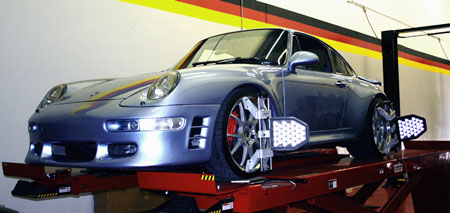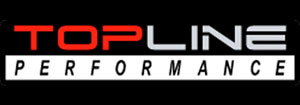WHEEL ALIGNMENTS
We proudly serve all of
Orange County, CA
- Huntington Beach
- Newport Beach
- Garden Grove
- Fountain Valley
- Santa Ana
- Westminster
- Seal Beach
- Irvine
- Long Beach
- Tustin
- Buena Park
- Stanton
 Wheel alignment, sometimes referred to as braking or tracking, is part of standard automobile maintenance that consists of adjusting the angles of the wheels so that they are set to the car maker’s specification. The purpose of these adjustments is to reduce tire wear, and to ensure that vehicle travel is straight and true (without “pulling” to one side). Alignment angles can also be altered beyond the maker’s specifications to obtain a specific handling characteristic. Motorsport and off-road applications may call for angles to be adjusted well beyond “normal” for a variety of reasons.
Wheel alignment, sometimes referred to as braking or tracking, is part of standard automobile maintenance that consists of adjusting the angles of the wheels so that they are set to the car maker’s specification. The purpose of these adjustments is to reduce tire wear, and to ensure that vehicle travel is straight and true (without “pulling” to one side). Alignment angles can also be altered beyond the maker’s specifications to obtain a specific handling characteristic. Motorsport and off-road applications may call for angles to be adjusted well beyond “normal” for a variety of reasons.
PRIMARY ANGLES
The primary angles are the basic angle alignment of the wheels relative to each other and to the car body. These adjustments are the camber, caster and toe. On some cars, not all of these can be adjusted on every wheel.
These three parameters can be further categorized into front and rear (with no caster on the rear, typically not being steered wheels) so summarily the parameters are:
- Front: Caster (left & right)
- Front: Camber (left & right)
- Front: Toe (left, right & total)
- Rear: Camber (left & right)
- Rear: Toe (left, right & total)
SECONDARY ANGLES
The secondary angles include numerous other adjustments, such as:
- SAI (Steering Axis Inclination) (left & right)
- Included angle (left & right)
- Toe out on turns (left & right)
- Maximum Turns (left & right)
- Toe curve change (left & right)
- Track width difference
- Wheelbase difference
- Front ride height (left & right)
- Rear ride height (left & right)
- Frame angle
- Setback (front & rear)
Setback is the difference between right side and left side wheelbase length. It can also be measured as an angle. Setback less than the manufacturer specified tolerance (for example about 6mm) does not effect car handling. That’s because, when the vehicle is turning, one wheel is ahead of the other by several centimeters and therefore the setback is negligible. There are even some car models with different factory setting for right and left side wheelbase length, for various design reasons. An off-spec setback may occur because of a collision or a difference between right and left caster.
MEASUREMENT
A camera unit (sometimes called a “head”) is attached to a specially designed clamp which holds on to a wheel. There are usually four camera units in a wheel alignment system (a camera unit for each wheel). The camera units communicate their physical positioning with respect to other camera units to a central computer which calculates and displays
Often with alignment equipment, these “heads” can be a large precision reflector. In this case, the alignment “tower” contains the cameras as well as arrays of LEDs. This system flashes one array of LEDs for each reflector whilst a camera centrally located in the LED array “looks for” an image of the reflectors patterned face. These cameras perform the same function as the other style of alignment equipment, yet alleviate numerous issues prone to relocating a heavy precision camera assembly on each vehicle serviced.

